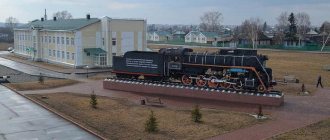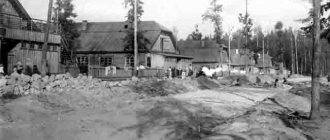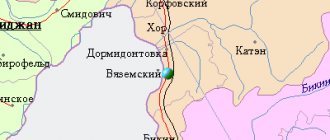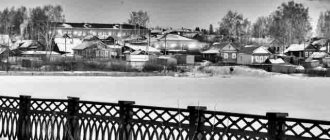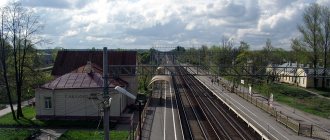This term has other meanings, see Povorino (meanings).
| City Povorino Coat of arms |
| A country | Russia, Russia |
| Subject of the federation | Voronezh regionVoronezh region |
| Municipal district | Povorinsky |
| urban settlement | Povorino |
| Coordinates | 51°12′00″ n. w. 42°15′00″ E. d. / 51.20000° n. w. 42.25000° E. d. / 51.20000; 42.25000 (G) [www.openstreetmap.org/?mlat=51.20000&mlon=42.25000&zoom=12 (O)] (Z)Coordinates: 51°12′00″ N. w. 42°15′00″ E. d. / 51.20000° n. w. 42.25000° E. d. / 51.20000; 42.25000 (G) [www.openstreetmap.org/?mlat=51.20000&mlon=42.25000&zoom=12 (O)] (I) |
| Internal division | East and West side |
| Chapter | Podbolotov Nikolay Alekseevich |
| Based | in 1870 |
| Former names | until 1938 — village near Povorino station until 1954 - |
| City with | 1954 |
| Square | 18[1]km² |
| Center height | 115 |
| Population | ↘17,173[2] people (2016) |
| Density | 954.06 people/km² |
| Agglomeration | 20 730K: Wikipedia: Articles without sources (type: not specified) [source not specified 3592 days ] |
| National composition | Russians, Armenians, Mongols, Gypsies, Hindus, Ukrainians, Azerbaijanis |
| Confessional composition | Orthodox Christians, others |
| Names of residents | Povorintsy, Povorinets |
| Timezone | UTC+3 |
| Telephone code | +7 47376 |
| Postal codes | 397350, 397351, 397354, 397355 |
| Vehicle code | 36, 136 |
| OKATO code | [classif.spb.ru/classificators/view/okt.php?st=A&kr=1&kod=20239501 20 239 501] |
| Official site | [povorinosity.ru/ osity.ru] |
| Povorino Moscow |
| Voronezh Povorino |
Audio, photo and video
on Wikimedia Commons
K: Settlements founded in 1870
Povorino
- a city (since 1954[3]) in Russia, the administrative center of the Povorinsky district of the Voronezh region[4] and the urban settlement of Povorino.
Population - 17,173[2] people. (2016).
Story
It arose as a village at the Povorino station (opened in 1870); name from the neighboring village of Povorino (aka Rozhdestvenskoye). Oikonym presumably from the Russian dialect cook
"fence, spinning town."
Perhaps the nickname Povorok
allows us to reconstruct the anthroponym
Povor
, from which we can assume the formation of the toponym
Povorino
.
In 1917, shortly before the so-called Kornilov rebellion, Povorino station was occupied by Cossack units loyal to Kornilov, which gave rise to a conflict between Kornilov and the Provisional Government. Subsequently, during the civil war, Povorino as a strategically important point (road junction) passed from hand to hand.
Since 1938, Povorino has had the status of a workers' village. City - since 1954.
Povorino at the end of the 19th – first half of the 20th centuries: from the station to the city
Here is the work presented in the category “History of my small homeland” of the competition “Heritage of Ancestors to the Young” 2022. Author - Yulia Zemtsova (Borisoglebsk), scientific supervisor - Lyudmila Alekseevna Kombarova. More information about the competition: https://vk.com/vrn_nasledie
Relevance of the research topic. For more than one hundred and forty years, Povorino has been a junction station. Trains run all year round. The city of Povorino has seen a lot over the years of its existence. He went through struggle and formation, through bloody wars and radical renewal. The history of the city is the history of thousands of people and the time of development. Time has established the geography of the city, its rhythm of life. And people, in order to live better, arranged the city and every single street and alley. During this time, Povorino station became and remains a major railway junction in the country.
A study of the history of the city of Povorino, Voronezh region, allows us to draw many conclusions, since the history of an individual locality is inextricably linked with the history of the entire state. This work is also important because thanks to it we learn not only about the economic, political or social development of the city, but also about the heroes who gave their lives for our peaceful future. Based on all of the above, the problem under study is of scientific interest.
The study of the history of the city of Povorino proceeded in line with the main trends of Russian historical science and generally shared the fate of historical local history. Historical local history in the city has begun to develop most actively in recent decades. In addition to individual articles, in 1992 Vasily Kovalev’s book “Povorino, my Povorino” appeared. It is based on materials published on the pages of the regional newspapers “Kolkhozny Trud”, “Kolkhoznaya Pravda”, “Zheleznodorozhnik”, “Stalin’s Word”, “Banner of Communism” and “Glory to Labor”. The author defined the main goal of his work as follows: “Let this book remind someone of their youth and adolescence, friends, relatives and friends, and let someone remember important events from their life, and also, as the poet A.N. Pleshcheev:
The torn fields, the ears of yellow cornfields,
The expanse of steppes, silently majestic.
In spring, sometimes wide rivers overflow.
Mysteriously rustling oak forests.”
To characterize the situation of Povorino and the Povorinsky district, its cultural and economic ties, it is also advisable to involve data from research works on the history of neighboring areas.
Thus, historians and local historians over the course of several decades have collected and comprehended certain factual material on the history of the city of Povorino. However, a general work on the history of the city in the period from 1870 to 1970. absent. A number of issues remain poorly studied or require revision in the light of modern approaches to the study of history.
The source base for the study consisted of documents from the Povorino municipal archive, as well as statistical information contained in newspaper publications, archival documents, and on the official website of the city of Povorino.
The object of the study is the city of Povorino, Voronezh region.
The subject of the study is the history of the city of Povorino at the end of the 19th - first half of the 20th centuries.
The purpose of the work is to systematize and summarize the information contained in various sources on the history of the city of Povorino in the late 19th - first half of the 20th centuries.
Povorino station was founded in the summer of 1870 [1]. The station received its name from the nearest ancient Russian village - Povorino [1], located on the left bank of the Khoper, five miles from the railway [2]. At that time, the village of Povorino already had another official name - Rozhdestvenskoye, after the first Orthodox Church. Subsequently, the name Povorino was assigned to the railway station, and the former village of Povorino in all documents began to be called Rozhdestvensky.
Due to the start of construction on March 21, 1868, of the first section of the Gryazi-Tsaritsyn railway from Gryazi station to Borisoglebsk, on October 28, 1870, the head of the railway allowed the three stations to be renamed. Povorino station became known as Volkonskaya.
By decree of the tsar, peasants from surrounding villages were involved in the construction of the Kharkov-Balashov railway. And already in December 1895 the first trains started running, and Povorino became a junction station. At the same time, four services were formed: track and building repair, rolling stock and traction, traffic, and telegraph. Warehouses, coal warehouses, a water supply system, residential buildings and office premises were also built. According to the 1897 census, there were 13 buildings and 223 inhabitants in Povorino [2]. To train skilled workers, a railway school was opened at the station in 1899.
The development of the station village took place in two directions. On the one hand, ruined peasants from nearby villages flocked here in search of bread. On the other hand, families of wealthy men moved from Rozhdestvenskoye, Zhulevka (Svintsovka), Pesok and Petrovskoye, opening trading establishments, snack bars and bread shops at the station. At the end of the nineties, Povorino already had a tavern, a wine shop, a textile shop and a grocery store. Every year, the station shipped about four million pounds of grain, over fifty thousand pounds of sunflower seeds, as well as thousands of heads of cattle and pigs to industrial centers.
At the enterprises of the Povorinsky railway junction, the working day lasted eleven and a half hours, as throughout Russia. People were very tired and often got sick because of this. But the doctor was only in Voronezh, at the road department. Not everyone could get there due to lack of funds. The owners of the road also imposed fines for absence from work due to illness. Discontent grew among the Povorin railway workers. Driven to despair, on October 10, 1905, they went on strike. And their neighbors supported them in this - the Novokhopersk workstations.
Frightened by strikes and strikes, the railway authorities rushed about in panic and often made strange decisions. On July 18, 1906, special positions of officials were established whose duties included ensuring that employees of one station did not communicate by telegraph with employees of another station.
After the defeat in the first Russian revolution, a rampant reaction began. Many workers were arrested along the Southeastern Highway. The Povorino station was also damaged. Many of the arrested Povorinites returned home, and then only after the overthrow of the tsarist government in 1917.
In 1911, at the request of the workers, a zemstvo hospital of the Balashov-Kharkov railway was opened at the Povorino station. From books donated by the intelligentsia, a small book was created to educate workers and their families.
In the summer of 1914, the world imperialist war began. The exploitation of workers intensified. The road management has introduced mandatory overtime work without additional pay. This happened because the flow of goods through Povorino increased significantly. Those who grumbled and openly expressed dissatisfaction were removed from work and sent to the front. A network of espionage and denunciations was widely developed. Life has become unbearable. Unable to withstand the tyranny and violence, in January 1917 the Otrozh railway workers went on strike, then the Voronezh, Borisogleb, and Elets railway workers. Two days later, the Novokhopertsy and Povorintsy joined them and stopped their work. On March 3, it became known that the rebellious working people had overthrown the hated autocracy.
After the February bourgeois-democratic revolution, a temporary revolutionary committee was created in the road management. Local committees of railway workers have been created in workshops and at stations. In May and June, for twenty-two days, the First Congress of Workers, Craftsmen and Employees of the South-Eastern Road met in Voronezh. The congress adopted a resolution to reduce the working day and to establish control over the railway administration. But the resolutions remained unimplemented because the main committee of the road included supporters of the bourgeois government. And the road management did not want to give up their positions.
The news of the victory of the socialist revolution was greeted by the Povorinites with great enthusiasm. At the beginning of December 1917, commissars of the road military revolutionary committee arrived from Voronezh. With their help, an eight-hour working day was introduced in all departments and services and workers were paid during the strike.
On June 28, 1918, the Soviet government issued a Decree on the nationalization of large-scale industry and railway transport [2]. Stubborn fighting began in Aleksikovo - Povorino - Novokhopersk. This happened because the South-Eastern Road, which gave millions of money to private owners, became public property.
Fierce fighting also broke out on August 4 and 6. The White Guards concentrated large forces and intended to bypass Povorino from the south and north, and then strike from the rear. The fight was fierce. The White Guards could not withstand the onslaught of the Lithuanian regiment and retreated.
Vladimir Ilyich Lenin closely monitored the state of affairs at Povorino station. At the beginning of May 1918, he signed a decree on the protection of railway lines, including the Tsaritsyn - Borisoglebsk line. Having learned that a large number of pounds of bread were sent from Tsaritsino through Aleksikovo, Povorino, Michurinsk to Moscow and the northern provinces, Lenin V.I. demanded that the heads of stations on the Southern Eastern Railway ensure the unhindered progress of grain routes.
“A very interesting conversation took place on February 26, 1919,” wrote V. Kovalev, “between Lenin and the Extraordinary Military Commissar of the Railways of the Southern Front, M.K. Vladimirov. The Defense Council decided, first of all, to restore the bridges on the Liski-Likhaya railway line, and Vladimirov considered it possible to repair the bridges on the Povorino-Tsaritsyno line, which were damaged during the transportation of combat cargo intended for Tsaritsyn.”
Vladimirov managed to perform a miracle. The restoration of the bridge over the Khoper River and the route from Borisoglebsk to Aleksikovo was carried out by Borisoglebsk and Povorinsk railway workers, as well as peasants from the surrounding villages. Other bridges on the Povorino-Tsaritsyno line, as well as station tracks and buildings, were also repaired.
In the spring of 1919, the Voronezh province again became the site of fierce battles. The troops of General A.I. Denikin developed an offensive over a large area and captured the cities of Balashov, Tambov, Borisoglebsk, Kharkov and Voronezh. The White Guards, supported by local kulaks and merchants, committed a bloody massacre at the Povorino station, in the villages of Peski, Rozhdestvenskoye and Kalmyk. Mass graves and monuments to the victims of the counter-revolution testify to this bloody time.
For a long time, the names of the pilots who died near Povorino were unknown. On instructions from the Red Army, they penetrated behind enemy lines and identified infantry and cavalry units. Sometimes they themselves carried out bombing attacks on the White Guard troops. One crew barely reached Povorino and crashed into the ground.
Already in 1965, the city of Povorino was visited by M. L. Bazhenov, a participant in the civil war, and said that he fought in the Povorino area as part of the 35th aviation detachment and even named the names of the heroes who died then. They were pilot Trusov and pilot observer Dmitriev. On May 9, 1965, on the 20th anniversary of the victory over the Nazi invaders, a monument was erected over the graves of the pilots in Victory Park.
After the defeat of the White Guards in September 1919, the Povorinsky Village Council was formed, which was part of the Rozhdestvenskaya volost. At that time, 520 people lived in Povorino.
Peaceful life did not last long. In 1920, the Tambov uprising, known as the “Antonovshchina,” began. The Povorinsky railway regiment also took part in the battles with the rebels.
An important event occurred in Povorino on August 3, 1923. At the citizens' meeting, the issue of organizing a party cell at the node was considered. The organizational meeting was attended by 7 communists and 225 non-party members [1]. Commissions were formed for cultural, educational and sports work, for work among women and among youth. Literacy centers were opened at the elementary school and at the loading and unloading area.
At the end of March 1925, elections to the Povorinsky Village Council took place. From the reports it is clear that the majority were rural people. Of the 25 deputies, twenty were engaged in agriculture and only five represented workers and employees.
The years were different, fruitful and lean. Many peasants in Povorino, like other villages, could barely make ends meet. The conclusion suggested itself: you can’t get out of poverty alone. And therefore, on September 6, 1925, a partnership for joint cultivation of the land “New Way” was established.
On the basis of the New Path partnership, a collective farm named after Kirov was created in the fall of 1929. The harvest was good. In the first years of collective farm life, the state grain procurement plan was fulfilled. During collectivization, excesses were made. They united not only draft animals, but also productive ones - cows and sheep. And even a bird. There was also enough violence and threats.
After 1929, industry began to rise. The Povorino station turned out to be a connecting node between construction sites and suppliers of machinery, equipment, and timber. The flow of cargo doubled, and the throughput of the hub was the same as ten years ago. There were not enough specialists, manual labor prevailed. We had to reconstruct the Povorinsky junction. In a short time, a power plant was built, supplying production facilities and residential buildings with electricity.
In 1931, the first section of the locomotive business was put into operation, as well as dead ends for car repairs and receiving and dispatch lines. Housing construction has acquired unprecedented proportions. Peasants from neighboring villages resettled on a permanent basis. In Povorino they built a personal farmstead. Locomotive drivers, their assistants and stokers moved from Novokhopersk and Borisoglebsk. From other cities - engineers, technicians, specialists in railways and communications. Each family was provided with an apartment or a separate house. This was the merit of the construction team.
In July 1931, the government developed a program for the urgent development of railway transport. This program also affected the Povorinsky node. The locomotive depot received new brands of locomotives and equipment for their repair. The impersonality in the operation of equipment has been eliminated. Piecework wages were also introduced. Wages directly depended on the quantity and quality of labor expended. In this regard, the number of faulty machines sharply decreased, since everyone wanted to receive increased wages. Signalmen, carriage workers and railway workers began to work effectively. Workers and specialists who had previously left the railway returned to transport.
Years passed. The Povorinsky node expanded. Enterprises have acquired new, more powerful equipment. And at the beginning of 1932, construction of the second stage of the locomotive depot was completed.
The Soviet government decided on significant reconstruction and construction of railways in the most important directions of the country. Large construction began in Povorino in 1935. In Povorino, the track development of the station for receiving and departing trains was expanded. Thus, a new locomotive depot was built, taking into account the repair and operation of locomotives of the FD and FDP series.
At the end of the thirties, another 30 residential buildings, a railway club for 350 people, a nursery and kindergarten, and service buildings were built. This made it possible to transfer the administration and political department of the road department from Borisoglebsk to Povorino. This increased the prestige of Povorino as a railway junction. The primary school, opened in the first years of Soviet power, was transformed into a secondary school in 1936.
During the Great Patriotic War, the Povorinsky junction played an important role in providing Soviet troops with ammunition and food during the Battle of Stalingrad.
At the beginning of 1942, a difficult situation arose on the railway lines leading to Stalingrad. The German command allocated squadrons of attack and bomber aircraft to paralyze the Povorino-Stalingrad road. On July 10, 1942, the Povorinsky junction and the locomotive depot were subjected to a massive German air raid, as a result of which 16 receiving and departure tracks, the 1st and 3rd sections of the depot, and the telephone exchange were destroyed. German planes bombed all the trains. Even those with Red Cross insignia on their roofs. But, despite this, the Povorin railway workers fulfilled their duty to the end.
In the winter of 1941-1942, the fuel problem became acute in railway transport. Before the war, the Povorino depot was supplied with coal exclusively from the Donetsk basin, but it was occupied by the Nazis. Coal from the Karaganda basin did not arrive regularly.
From the memoirs of Vasily Prygunkov, an assistant driver of one of the trains at Povorino station: “... the main thing was to maintain normal steam pressure in the boiler. This was achieved with great difficulty, since Donbass was occupied, many mines were destroyed and flooded, and coal came in half with rock. In addition, for the purpose of blackout at night, only a small wick in a tin with fuel oil was used to monitor the steam pressure gauge.”[3]
The Red Army command developed a plan to encircle and defeat German troops in the Stalingrad area. To ensure the secrecy of the prepared operation, it was decided to regroup units only at night.
In two months, railway workers transported over 30 thousand wagons with military cargo to protect Stalingrad at the junction.
From a letter from Povorin railway workers to the workers of the Voronezh region with a call to mobilize all forces to defeat the enemy: “...Let the trains run non-stop along the front line! Let the troops, tanks and guns, machine guns and mortars, shells and bombs we delivered on time crush, reduce and destroy the damned Hitler bandits.
We appeal to all residents of the southeast, to all workers of industrial enterprises, to all workers of the Voronezh region: All in the ranks of those competing in honor of the glorious anniversary of the Red Army, we will respond to the military exploits of our heroic warriors with new labor successes, an increase in production output needed by the front, and further fundraising efforts for the construction of tanks and airplanes, donating bread and other products from personal reserves to the food fund of the Red Army! We, comrades, have nothing more precious than our beloved Motherland! Long live the glorious and heroic Red Army!
January 1942." [3]
Showing examples of courage, driver Kaldin P. was on his locomotive for 18 days in a row, driving trains to the front line. The steam locomotive Kaldina was bombed 20 times. The locomotive was hit directly by enemy tanks that had broken through to the front line, but the locomotive crew, skillfully maneuvering the locomotive and train, deceived the enemy and delivered the trains with cargo to the front. When Kaldin delivered one of the trains to its destination, the front-line commander shook his hand and said: “Someday they will write a song about your heroic deeds.” And indeed, the song was composed. It said:
We will remember the flights to Stalingrad
And an endless tail of carriages
We will remember for a long time, like shells
The wounded driver delivered!
Back in 1942, by decision of the State Defense Committee, it was decided to create reserve columns of steam locomotives. More than 500 steam locomotives from the columns took part in the Battle of Stalingrad. In the columns of the special reserve, Povorinsky railway workers also performed their duty: Anokhin - awarded three badges of “Honorary Railway Worker”, Zinchenko P.F. – awarded the “Honorary Railway Worker” badge, driver V.I. Govorov. and others.
On August 7, 1943, at 1 hour 15 minutes, a fire broke out on the Borisoglebsk-crossing point 215 kilometer from a direct hit from a bomb. Ammunition began to explode. The train was torn into two parts. Kopylov’s brigade took the lead part of 18 cars towards Povorino. Thanks to the courage of the workers of the Povorinsky fire train, it was possible to stop 15 cars of the tail section and save the ammunition.
By decree of the State Defense Committee of September 3, 1943, the Stalingrad Railway was re-organized, and the Povorino locomotive depot again became part of the South-Eastern Railway.
Many employees of the locomotive depot took a direct part in the front, being in the ranks of the defenders of the Motherland, who fulfilled their duty to the Fatherland with dignity and courage. Many of them did not return from the war - they died for the freedom of our Motherland. Their names: Asoskov V.A., Barkalov M., Evtushenko E.S., Kaldin P., Tikhonov S.I. and others. In memory of their feat, a monument “No one is forgotten, nothing is forgotten” was erected in the locomotive depot of the city of Povorino.
Conclusion
Povorino is a major junction station founded in 1870. Povorino felt its rise at the beginning of the 20th century. Hospitals, clubs, schools, etc. began to open. With the advent of the 1917 revolution and the establishment of Soviet power, the station fell into disrepair due to strikes and uprisings. But over time, everything returned to normal, and the city began to develop again.
The years of the Great Patriotic War were tragic not only for the whole country, but also for Povorino in particular. Many railroad workers died delivering provisions and ammunition to the front (mostly Leningrad and Stalingrad). A large part of school No. 44, which housed a hospital during the war, was also destroyed. Residents of the city volunteered for the front, many while still schoolchildren. The Great Patriotic War caused enormous damage to Povorino.
Bibliography
- Kovalev V.G. Povorino, my Povorino. Povorino: Prikhoperye, 1954.
- Povorino is 50 years old. Voronezh: Avega, 2012.
- History of the Locomotive Depot: An unpublished manuscript based on reports from locomotive depot workers.
Excerpt characterizing Povorino
The movement of peoples begins to settle into its shores. The waves of the great movement have subsided, and circles are formed on the calm sea, in which diplomats rush, imagining that they are the ones causing the lull in the movement. But the calm sea suddenly rises. It seems to diplomats that they, their disagreements, are the reason for this new onslaught of forces; they expect war between their sovereigns; The situation seems insoluble to them. But the wave, the rise of which they feel, is not rushing from where they expect it. The same wave is rising, from the same starting point of movement - Paris. The last surge of movement from the west is taking place; a splash that should resolve the seemingly intractable diplomatic difficulties and put an end to the militant movement of this period. The man who devastated France, alone, without a conspiracy, without soldiers, comes to France. Every watchman can take it; but, by a strange coincidence, not only does no one take it, but everyone greets with delight the man whom they cursed the day before and will curse in a month. This person is also needed to justify the last collective action. The action is completed. The last role has been played. The actor was ordered to undress and wash off the antimony and rouge: he would no longer be needed. And several years pass in which this man, alone on his island, plays a pathetic comedy in front of himself, petty intrigues and lies, justifying his actions when this justification is no longer needed, and shows the whole world what it was like what people took for strength when an invisible hand guided them. The manager, having finished the drama and undressed the actor, showed him to us. - Look what you believed! Here he is! Do you see now that it was not he, but I who moved you? But, blinded by the power of the movement, people did not understand this for a long time. The life of Alexander I, the person who stood at the head of the countermovement from east to west, is even more consistent and necessary. What is needed for that person who, overshadowing others, would stand at the head of this movement from east to west? What is needed is a sense of justice, participation in European affairs, but distant, not obscured by petty interests; what is needed is a predominance of moral heights over one’s comrades—the sovereigns of that time; a meek and attractive personality is needed; a personal insult against Napoleon is needed. And all this is in Alexander I; all this was prepared by countless so-called accidents of his entire past life: his upbringing, his liberal initiatives, his surrounding advisers, Austerlitz, Tilsit, and Erfurt. During a people's war, this person is inactive, since he is not needed. But as soon as the need for a common European war arises, this person at that moment appears in his place and, uniting the European peoples, leads them to the goal. The goal has been achieved. Since the last war of 1815, Alexander is at the height of possible human power. How does he use it? Alexander I, the pacifier of Europe, a man who from his youth strove only for the good of his people, the first instigator of liberal innovations in his fatherland, now that he seems to have the greatest power and therefore the opportunity to do the good of his people, while Napoleon exile makes childish and deceitful plans about how he would make humanity happy if he had power, Alexander I, having fulfilled his calling and sensing the hand of God on himself, suddenly recognizes the insignificance of this imaginary power, turns away from it, transfers it into the hands of those despised by him and despised people and says only: “Not to us, not to us, but to your name!” I am a man too, just like you; leave me to live as a human being and think about my soul and God. Just as the sun and each atom of the ether is a ball, complete in itself and at the same time only an atom of a whole inaccessible to man due to the enormity of the whole, so each personality carries within itself its own goals and, at the same time, carries them in order to serve common goals inaccessible to man. . A bee sitting on a flower stung a child. And the child is afraid of bees and says that the purpose of a bee is to sting people. The poet admires a bee digging into the calyx of a flower and says that the bee’s goal is to absorb the aroma of flowers. The beekeeper, noticing that the bee is collecting flower dust and bringing it to the hive, says that the bee's goal is to collect honey. Another beekeeper, having studied the life of a swarm more closely, says that the bee collects dust to feed young bees and breed the queen, and that its goal is to procreate. The botanist notices that, by flying with the dust of a dioecious flower onto the pistil, the bee fertilizes it, and the botanist sees the bee’s purpose in this. Another, observing the migration of plants, sees that the bee promotes this migration, and this new observer can say that this is the purpose of the bee. But the final goal of the bee is not exhausted by either one, or the other, or the third goal, which the human mind is able to discover. The higher the human mind rises in the discovery of these goals, the more obvious to it is the inaccessibility of the final goal. Man can only observe the correspondence between the life of a bee and other phenomena of life. The same goes for the goals of historical figures and peoples. The wedding of Natasha, who married Bezukhov in 13, was the last joyful event in the old Rostov family. That same year, Count Ilya Andreevich died, and, as always happens, with his death the old family fell apart. The events of the last year: the fire of Moscow and the flight from it, the death of Prince Andrei and Natasha’s despair, the death of Petya, the grief of the Countess - all this, like blow after blow, fell on the head of the old count. He did not seem to understand and felt unable to understand the meaning of all these events and, morally bending his old head, as if he was expecting and asking for new blows that would finish him off. He seemed either frightened and confused, or unnaturally animated and adventurous.
Links[edit]
Notes[edit]
- ^ abcdefgh Law No. 87-OZ
- ^B with Povorino Official Website (in Russian)
- ^ a b Federal State Statistics Service (2011). All-Russian Population Census 2010. Volume 1 [All-Russian Population Census 2010, vol. 1]. All-Russian Population Census 2010 [All-Russian Population Census 2010] (in Russian). Federal State Statistics Service.
- "26. The size of the permanent population of the Russian Federation by municipalities as of January 1, 2022". Federal State Statistics Service. Retrieved January 23, 2022.
- ^ abcde Law No. 75-OZ
- "On the Calculation of Time". Official Internet portal of legal information
. June 3, 2011. Retrieved January 19, 2022. - Post office. Information and computing center of OASU RPO. ( Post office
).
Search for postal service objects ( postal Search for objects
) (in Russian) - ↑
Federal State Statistics Service of Russia (May 21, 2004). The population of the Russian Federation, cities of the Russian Federation as part of federal districts, urban settlements, settlements, settlements, settlements is 3 thousand or more people. [Population of Russia, its federal districts , subjects of the Federation, districts, urban settlements, rural settlements - administrative centers and rural settlements with a population of more than 3000 people] (XLS). All-Russian Population Census of 2002 [All-Russian Population Census of 2002] (in Russian). - All-Union Population Census of 1989 Population of Union and Autonomous Republics, Autonomous Regions and Districts, Territories, Regions, Urban Settlements and Village District Centers [All-Union Population Census of 1989: Current Population of Union and Autonomous Republics, Autonomous Regions and Districts, Territories, Regions , districts, urban settlements and villages performing the functions of district administrative centers]. All-Union Population Census of 1989 [All-Union Population Census of 1989] (in Russian). Institute of Demography of the National Research University: Higher School of Economics [Institute of Demography of the National Research University: Higher School of Economics]. 1989 - via Demoscope Weekly
.
How to use distance calculation?
In order to calculate a route between cities, start entering the name of the starting point of the route in the “From” field. Select the desired city from the contextual tool drop-down. By analogy, fill out the “Where” field and click the “calculate” button.
On the page that opens, the route will be laid out on the map, the starting and ending settlements will be marked with red markers, and the route along the road will be shown with a red line. Above the map the total length of the route, travel time and fuel consumption will be indicated. Below this information there will be a summary table with detailed information about the route and sections of the route: type of road, estimated length and duration of each section of the route.
The resulting route can be printed or, by changing some parameters, the calculation can be repeated. In additional settings, you can specify transit settlements, as well as adjust the estimated speed on roads of each type. Below the additional settings there are data entry fields for the fuel calculator. Enter in them the current fuel consumption of your car and the average price of 1 liter of fuel. When re-calculating, this data will be used to calculate the required amount of fuel and its cost.
